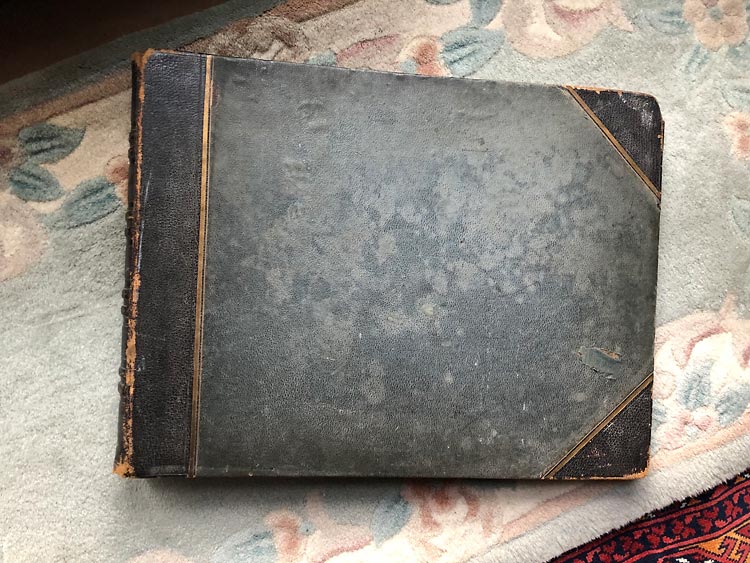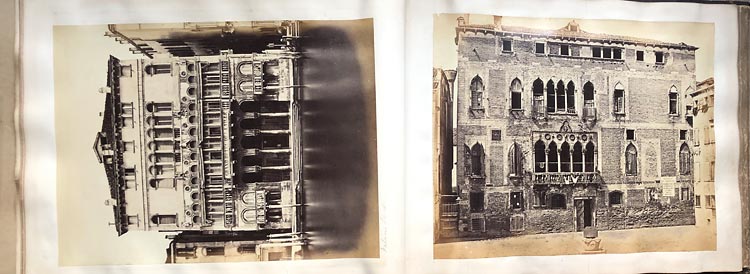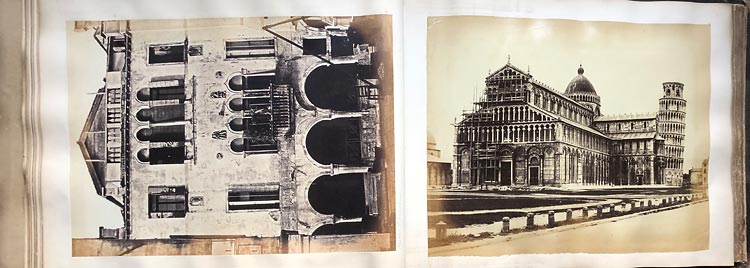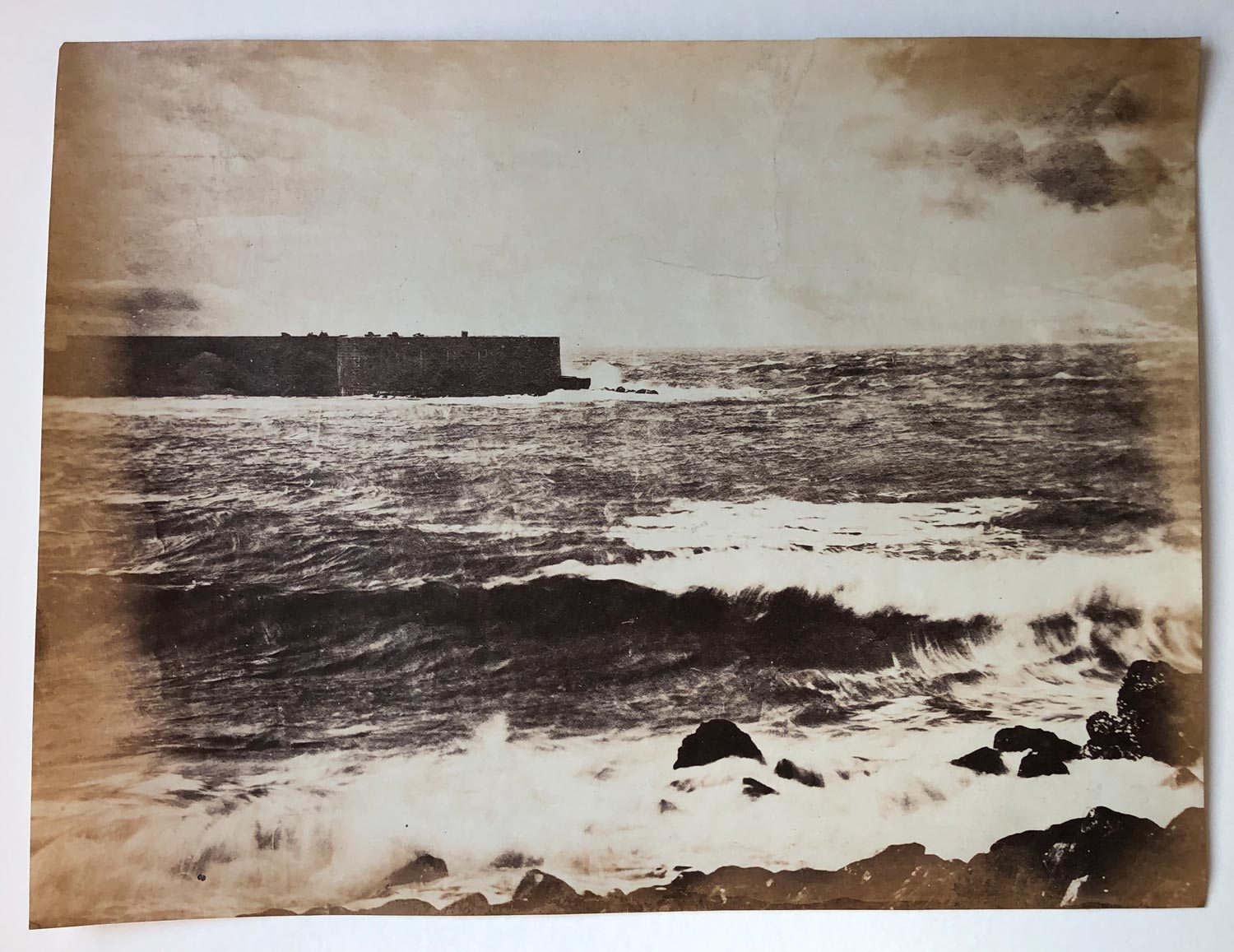“AN ILL FAVOURED THING, SIR, BUT MINE OWN.”
– Touchstone in As You Like It by
William Shakespeare
You know how it is. You are at an auction view, you have limited time, and there are a large number of lots to look at. You have identified the items of particular interest so you look only cursorily at the rest. It so happened that I was able to attend in person the auction in question, which was in the provinces. I noticed that one of the lots I had skimmed through and thought reasonable but too highly estimated did not sell, even though the auctioneer was prepared to drop the bidding way below the estimate. So afterwards I made a cheeky offer, which was duly accepted, and the lot was mine.


It was an album containing over sixty large albumen prints of Venice, mainly by Domenico Bresolin and Carlo Ponti (who bought Bresolin’s negatives) dating from 1855 to 1865. Only when I got it home did I start to go through the pages carefully. I hadn’t turned more than a page or two when I stopped short. The print, much the same size as all the others, was not of Venice but was a seascape and I immediately recognised it as La Grande Vague, Séte, by Gustave le Gray. What was it doing amongst the Venetian palazzos and architectural details that constituted the rest of the album?

Before getting too excited I observed the condition of the print with a baleful eye. It was faded, there was a vertical tear from the top edge, and a pronounced crease across half the sky area. The print had been cut down, possibly to fit the album page and conform to the dimensions of the other prints in the album. It measured 260 by 352mm, rather than the full size of 357 by 419mm. The majority of the lost area was in the sky and on the left-hand side of the print. Finally, there was no red Le Gray signature in the bottom right corner.

I took the page out of the album and sent it to Nick Burnett at Museum Conservation Services to see what could be done. After repairs and a clean it came back a much improved item, but there was no hiding the fact that it was a long way from being in museum condition. Other prints in the album had similar edge fading, and it was clear that the Le Gray print had been included at the same time as the album as a whole was put together. On the back of the print, when lifted from the page, writing emerged. In a faded contemporary ink hand was written “Veduta del Mare”, and above that what might be “Lido”. Was this the hand of the print seller who put the album together?
Ken Jacobson in his seminal book “The Lovely Sea View: A Study of the Marine Photographs published by Gustave Le Gray 1856-1858” published in 2001 examines the market for Le Gray’s prints. He describes the role of Murray and Heath, Le Gray’s London agents, and illustrates their advertisement for Le Gray’s famous picture of Sea and Clouds, where they claim that 800 copies had been subscribed for in two months. Ken also illustrates the advertisement of a Torquay print seller offering both Le Gray Sea and Cloud photographs as well as magnificent views of Venice, Rome and elsewhere. So here is a coincidental link between the Venice views in my album and Le Gray seascapes.
The usual date for the Grand Vague print is given as 1857 and that would tie in with the dates of the Bresolin prints in my album, the earliest of which dates to about 1855, while others are as late as the mid 1860s. Perhaps the album was put together by a print seller at the Lido in Venice (the barrier island in the Venetian lagoon. The late 1850s was the time that the Lido began to open up to tourists). Close examination of the Le Gray print makes me wonder whether it might be a copy print. Does this suggest that the print seller made multiple copies of an original Le Gray in order to meet popular demand in faraway Venice? Sylvie Aubenas in her book on Le Gray points out that his natural customers included painters. Painters were also attracted to Bresolin’s work. John Ruskin in “The Stones of Venice” describes in detail Bresolin’s photograph of the Window Façade of the Palazzo Agnusdio, which is one of the prints in my album;…..”the spandrils of the windows are filled by the emblems of the four evangelists, sculpted in deep relief, and touching the edges of the arches with their expanded wings….I purposed to give drawings in my folio work, but I shall probably be saved the trouble by the publication of the beautiful calotypes lately made at Venice….”
Perhaps the album was put together for the use of artists and it was thought that a seascape would add variety. If the print seller was using copy prints he would have had less compunction about chopping the size down to fit the album. It is known that Le Gray offered a “reduced copy” of the Sea and Sky view (as well as a full-size version) at the 1857 exhibition of the Birmingham Photographic Society. It is unlikely that would mean a trimmed down version; it is more likely to have been a smaller print from a copy negative. As for the lack of a signature, we know that Le Gray issued unsigned prints, and several are illustrated in Eugenia Parry Janis’s book “The Photography of Gustave Le Gray.
Finally, I turn to the question I know you are all thinking about—what might my Gustave Le Gray with multiple condition problems be worth? The rare book dealer Rick Gekoski in his recently published reminiscence “guarded by Dragons” (an excellent read) states that rare books do not have a value, but a range of possible values. The same applies to photographs. He toys with the concept of transactional value-that an item is only worth what you can get a buyer to pay for it-but recoils from the slippery slope that implies. Scouring through old auction catalogues I found a lot in a Sotheby’s sale in June 1981 that was a fragment of the Grand Vague print, basically the bottom section that admittedly included the signature and seemed to have reasonable tones. It was estimated at £250-350 and sold for £440 (about £1500 in today’s money). Curiously what seems to be the same print, but now framed and glazed, reappeared at a Christies auction in October 1983, estimated at £100-150. The results list stated it had been withdrawn.
By a strange coincidence a few months after my purchase a very damaged Le Gray print of Le Bric appeared at another provincial saleroom. It had worse damage than my print, with severe scratches and loss to the surface. It was estimated at £3000-4000 and duly failed to sell.
But trying to guess the value misses the point. I didn’t even know there was a Le Gray in the album when I bought it, and nor did the auctioneer. The serendipity of discovery is its own reward. And possesses a value that money cannot buy.
All images courtesy of Richard Meara. Photography by James Meara.

